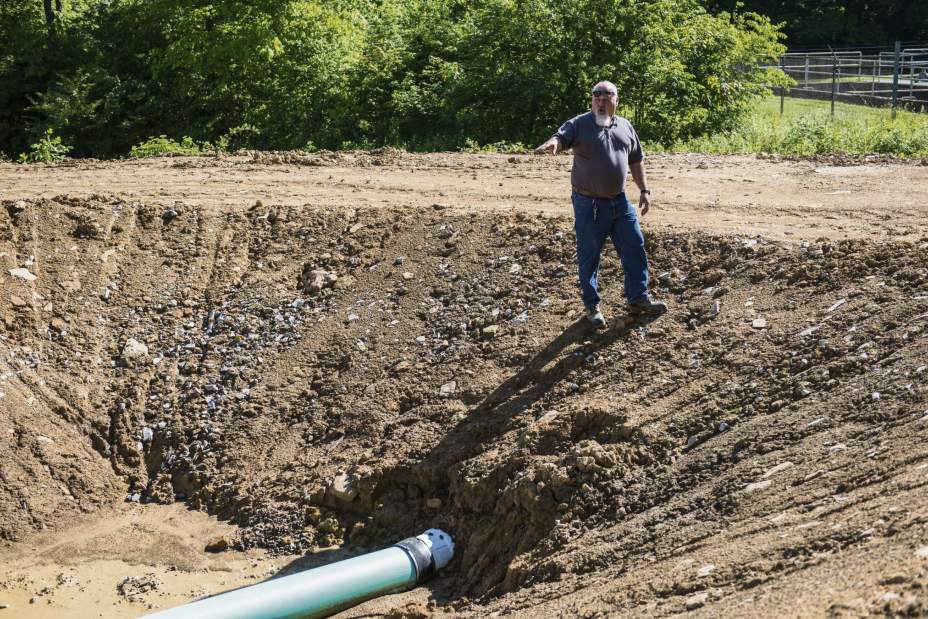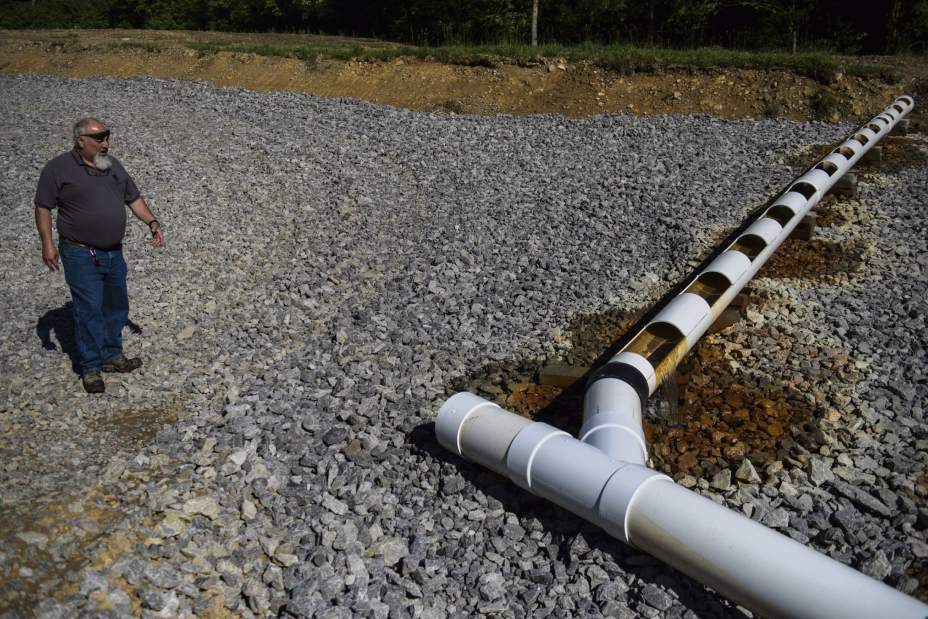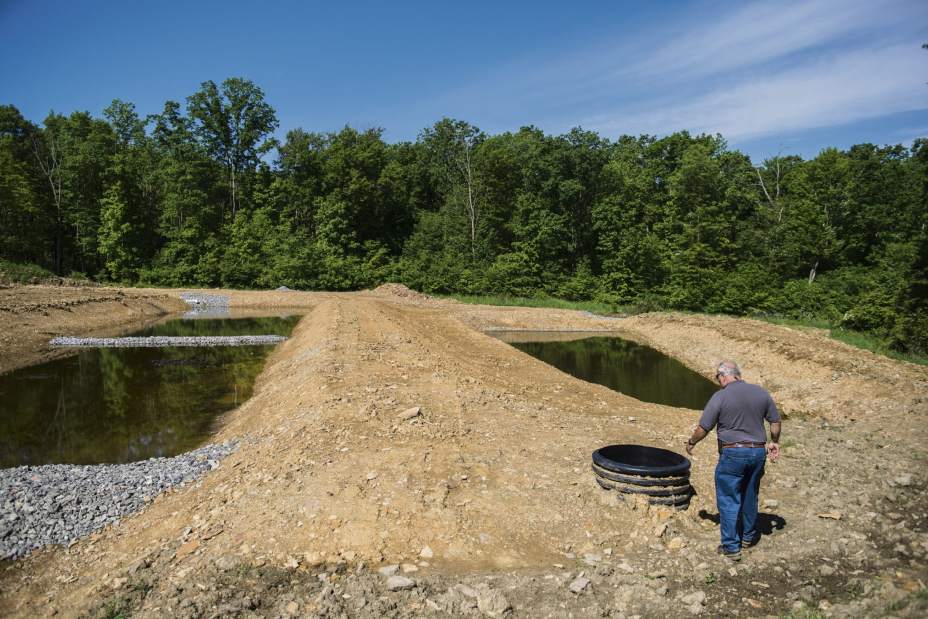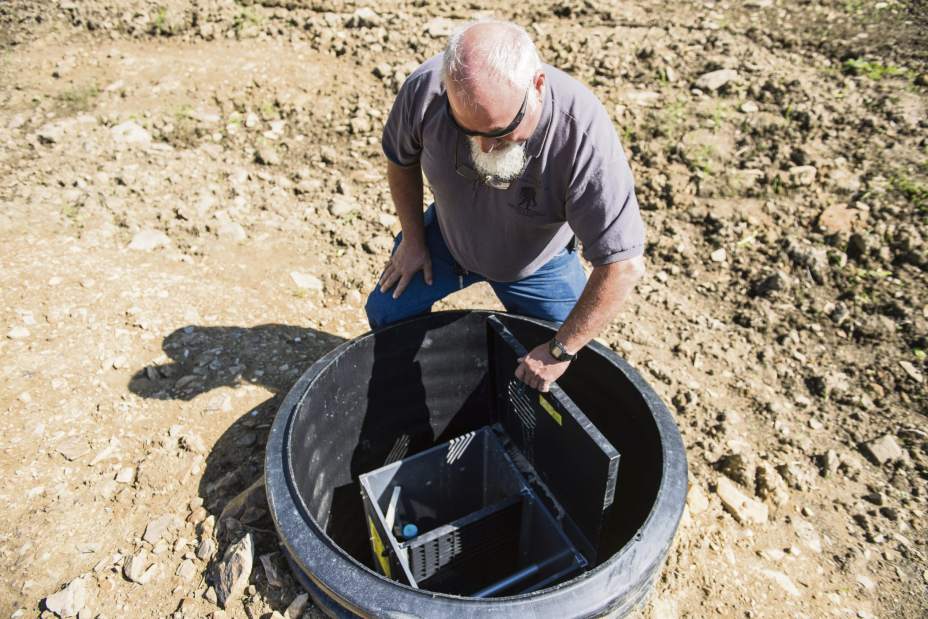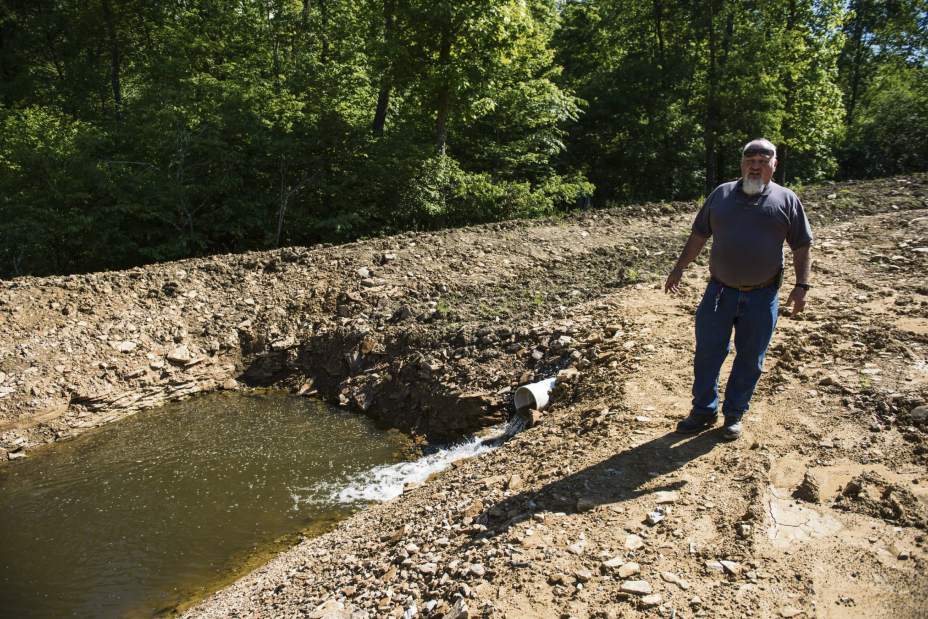Project to curb mine's impact on Derry Township state park nearly complete
Campers, hikers and fishermen at Keystone State Park have an old coal mine to thank for their recreation, but the underground operation left a mixed legacy.
Along with the park's trails, wildlife and scenic beauty, the abandoned Derry Township mine continues to be the source of acidic discharges that the state has struggled to control since the 1980s.
The installation of a passive water treatment system in 2001 and 2004 — primarily a series of pipes and ponds — went a long way in reclaiming the area downstream from Keystone Lake. But the system was showing more recent signs of failure, officials said, prompting the state's Bureau of Abandoned Mine Reclamation to undertake a complete overhaul that is nearing completion.
“The more of these we build, the more we learn,” said David Hochstein, the bureau's environmental project construction inspector. “These passive systems are more economical. We're kind of seeing if it can treat itself.”
Officials were particularly concerned with the accumulation of iron and other metals, a high level of acidity and the potential for seeps to flood the park's ball fields.
“Things were backing up, so we realized this project was needed,” Hochstein said. “We're capturing all the water from the mine and treating it.”
Keystone State Park takes its name from the Keystone Coal & Coke Co., which operated Salem No. 2 deep mine in the area from 1938 to 1953. The state's purchase of the mine property added about 300 acres to the new state park.
Today, the sealed mine entrance sits east of Pavilion No. 2 and north of the cabin entrance, according to the park brochure.
“The ground underneath Hillside Campground and the cabin colony is honeycombed with miles of tunnels,” the brochure says, noting that a map of the tunnels is on display at the James A. Kell Visitor Center.
Over the years, state park and environmental officials have monitored the ongoing impact of the mine on the park. They concluded last year that more remediation work was necessary.
The $428,418 contract was awarded in November to Terra Works Inc. of Clarion, funded by a federal set-aside program for abandoned mine reclamation. The program, created by the Surface Mining Control and Reclamation Act of 1977, is funded by a fee collected on each ton of coal mined in the United States.
Pennsylvania may set aside 10 percent of the funds to address acid mine drainage. Such projects usually are prioritized according to whether there is a threat to public health or safety, but the Keystone project is considered a Priority 3 because it involves the restoration of land and water resources, said spokeswoman Lauren Fraley of the state Department of Environmental Protection.
“The new system treats acid mine drainage at a more efficient rate, improves water quality and restores fish habitat,” Fraley said. “Without the redesign, there was a risk of losing stream miles and undoing the improvements of the previous system.”
Prior to construction of the original system in the early 2000s, there were no fish below the discharge area, she said. The aquatic life that is there now will be protected by the improved water quality, she said.
Acid mine drainage occurs when surface water comes into contact with metals in an abandoned coal mine and affects the pH level of water downstream — in this case, McCune Run, which drains into Loyalhanna Creek.
The iron content was such that it was clogging the existing mine drain and increasing the level of acidity, Hochstein said. Attempts in the late 1980s and early 1990s to reduce acidity by injecting an alkaline solution through a series of boreholes were unsuccessful.
The redesigned system, which is about 90 percent complete, will replace the existing limestone upflow pond with a horizontal limestone bed. Workers have added two settling ponds before and after the limestone bed, reconstructed an aerobic finishing wetland and installed a manganese removal bed at the end of the system.
“We've had a lot of success with these horizontal flowbeds,” said Craig Treese, section chief for the DEP's Bureau of Conservation and Restoration. “We want to get the metals to drop out and get neutral water into the stream.”
The new design will treat the water so that it reaches a neutral pH of 7, Treese said. It previously had a low pH of 3, which means a high level of acidity. Water with a pH of 4 or lower is similar to battery acid, according to earthworks.com.
The system can process up to 100 gallons per minute, although the average flow will be closer to 55 gallons per minute.
The project will be completed this summer with the installation of mushroom substrate, a kind of mulch, and the planting of cattails and rushes — all of which thrive in an iron environment and reduce metal content. The site will be revegetated with grasses, legumes and wildflowers.
Stephen Huba is a Tribune-Review staff writer. Reach him at 724-850-1280, shuba@tribweb.com or via Twitter @shuba_trib.

